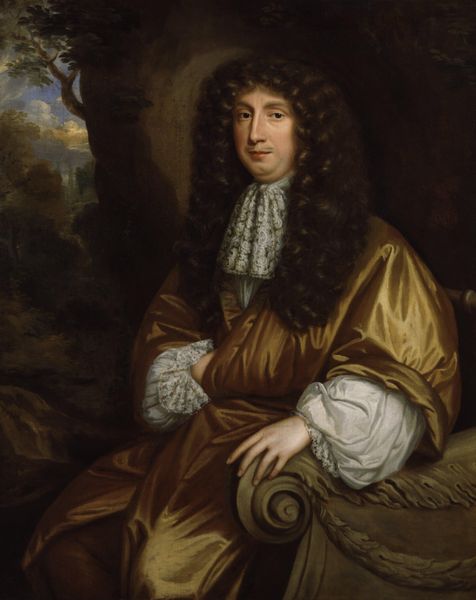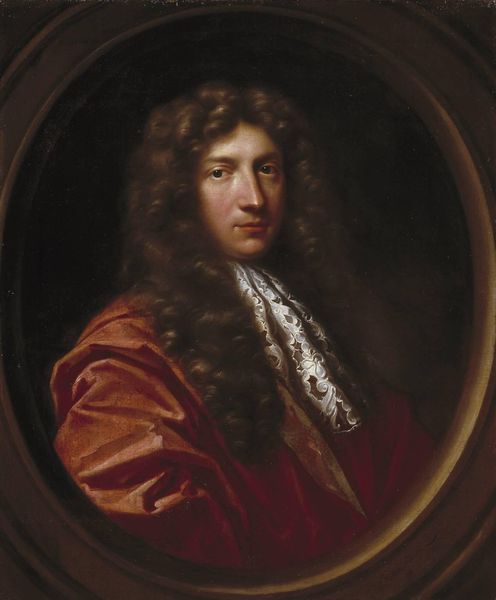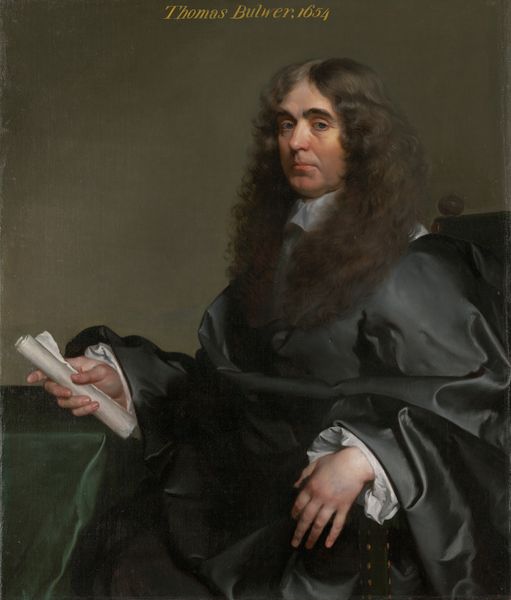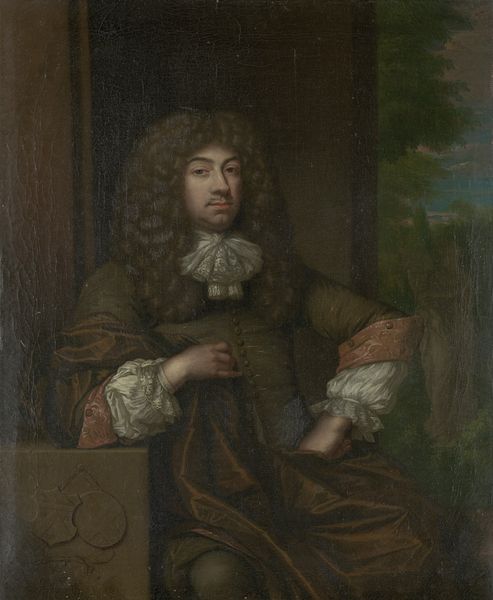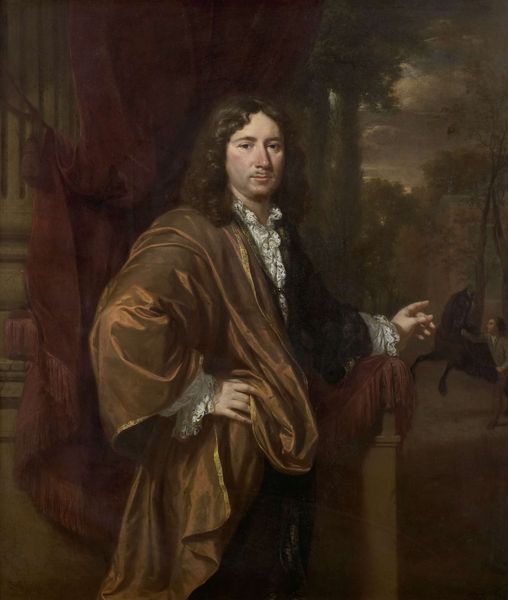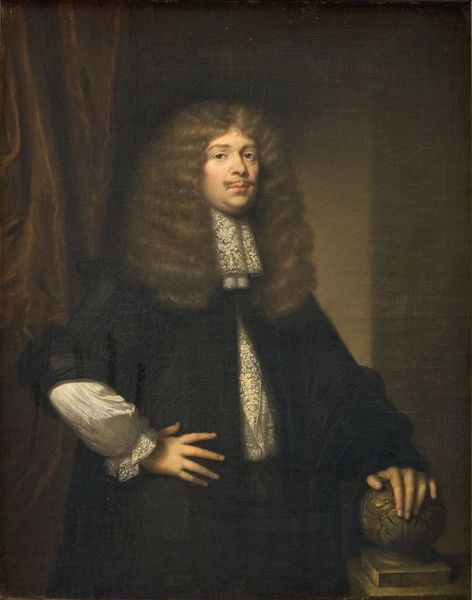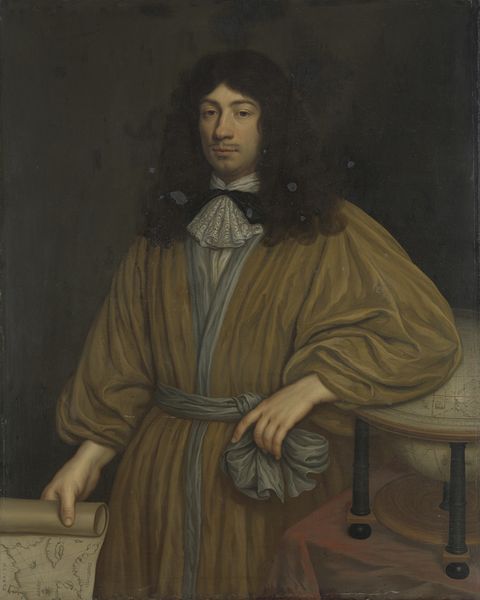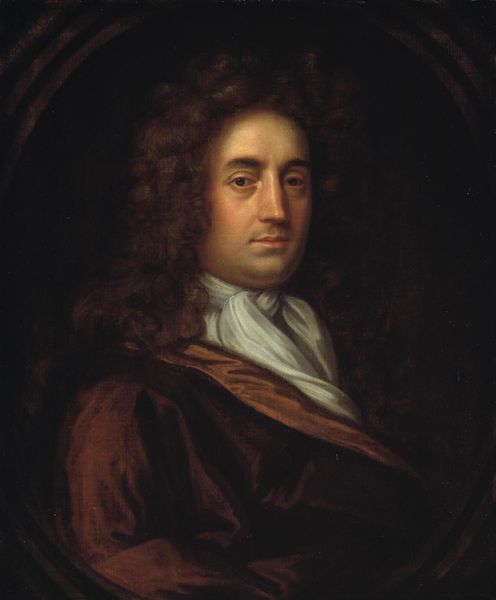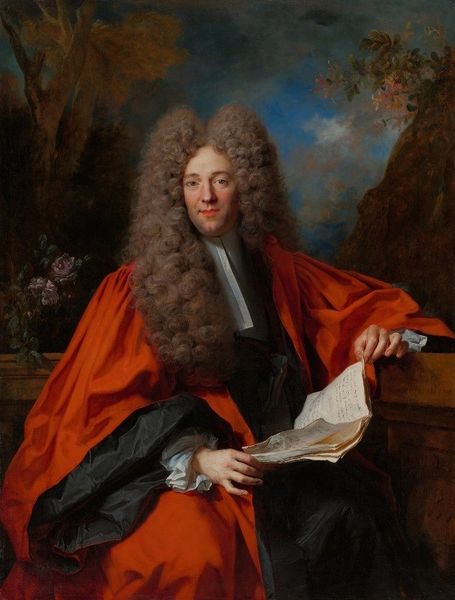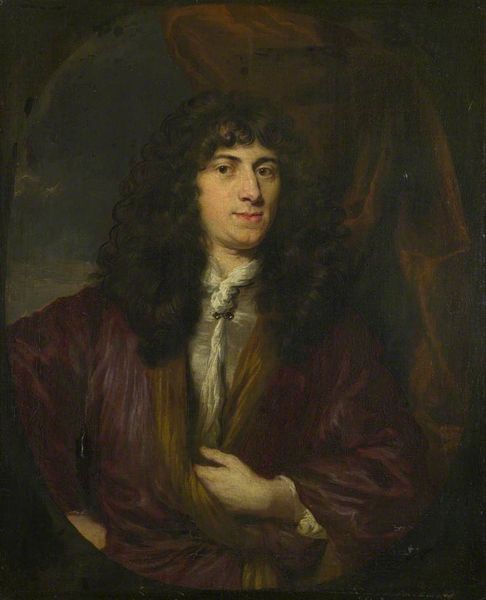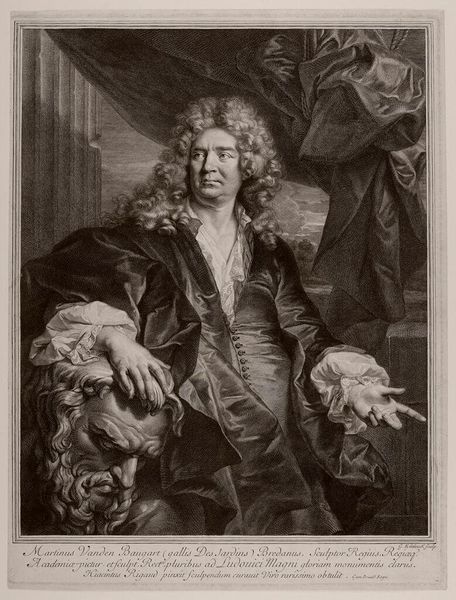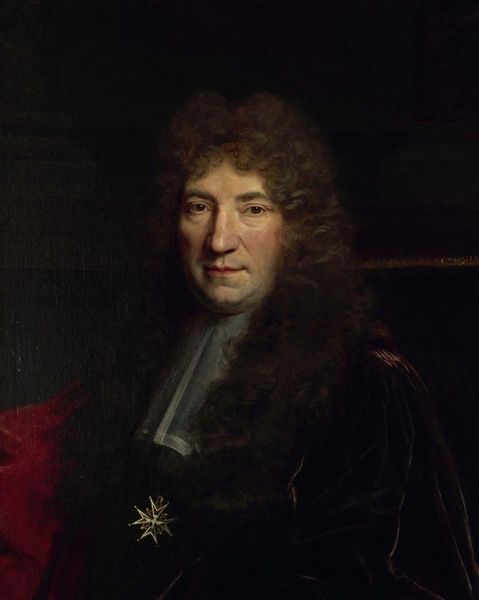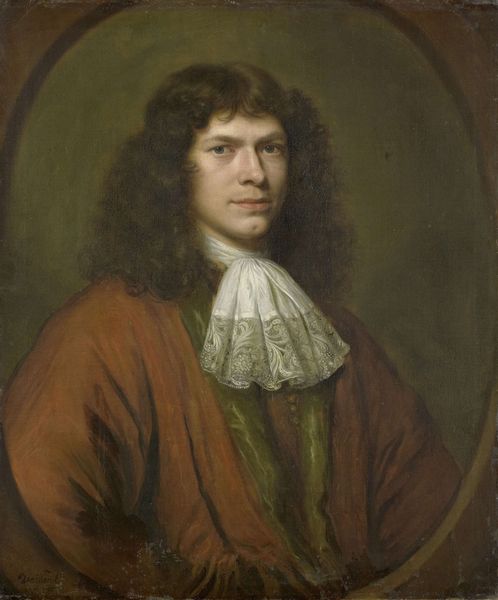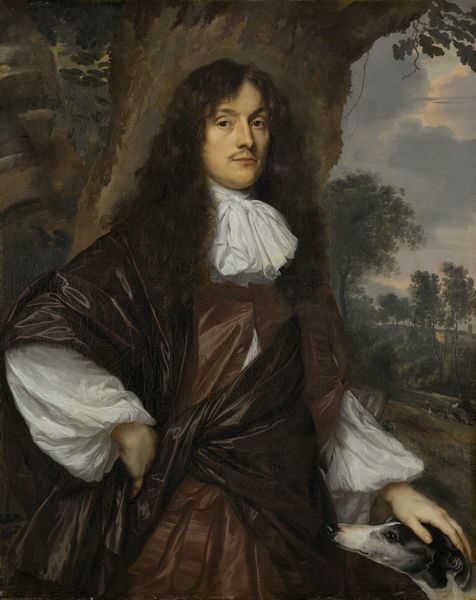
Portrait of Anthonie van Leeuwenhoek, Natural Philosopher and Zoologist in Delft 1680 - 1686
0:00
0:00
oil-paint
#
portrait
#
baroque
#
oil-paint
#
oil painting
#
genre-painting
#
academic-art
Dimensions: height 56 cm, width 47.5 cm
Copyright: Rijks Museum: Open Domain
Editor: Here we have Jan Verkolje’s oil on canvas, "Portrait of Anthonie van Leeuwenhoek, Natural Philosopher and Zoologist in Delft," from around the 1680s. It strikes me as very posed, almost like a stage setting for intellect. What's your take on it? Curator: Indeed. It's crucial to remember the function of portraits in the late 17th century. How do you think it was perceived publicly? Editor: To communicate the subject's status and achievements? Like a visual resume? Curator: Precisely. Note the globe, the papers – these aren't just props. They signify van Leeuwenhoek's intellectual world. The Dutch Republic cultivated a specific image of itself, one of mercantile success intertwined with scientific advancement. He’s writing, involved, which signals industry. Editor: So, it’s less about capturing his likeness and more about constructing a particular persona for public consumption? Curator: It's both. Verkolje's skill lies in merging the individual with the broader social aspirations. These images shaped cultural narratives. Think of the rise of the middle class and how portraiture played a role in establishing their cultural power. Editor: I see! The painting becomes a piece of the public identity… it makes me consider the museum context then and now, and the purpose it holds. Curator: Exactly! And what does it tell us about our society when we choose to showcase these works now? Editor: Fascinating! I hadn't considered the painting's role in constructing not just the sitter's, but also the Dutch Republic’s image. Curator: It's always about seeing the art within its societal web, and recognizing that we now, in our time, create another layer on its perception.
Comments
No comments
Be the first to comment and join the conversation on the ultimate creative platform.
